Business is the art of problem-solving. Learning how to solve problems keeps you in business and your customers returning.
Problems and quality issues arise constantly, and quickly finding solutions saves your company time and money. Often, the same problems keep coming up again and again.
Handling each problem this way can be time-consuming and resource-intensive. Instead of solving the same problem repeatedly, you can address the root cause to remove the source of the problem.
Fortunately, you don’t have to manually map out the causes and solutions for every problem your company faces. Root cause analysis software is designed to do the heavy lifting for you.
Use Motion to guide your root cause analysis process
Sign up now to get started
What is root cause analysis?
Root cause analysis (RCA) is the process of finding the source of a problem in your business. It’s a step-by-step methodology for examining a problem and determining its cause.
When problems arise in a process, they aren’t often random occurrences. There is usually a deeper issue that causes the same problem to occur repeatedly.
You can use root cause analysis as a methodology to find the cause of the problem. Then, you’ll fix the source of the problem, preventing it from recurring.
Root cause analysis reduces errors in business processes, helping your business save time and money. You can run the RCA process repeatedly to refine your workflows and improve your business's performance.
What is root cause analysis software?
Root cause analysis is labor-intensive when done manually. Root cause analysis software streamlines the process and simplifies the steps — which makes it quicker and more efficient than handling the process manually.
Your choice of root cause analysis software depends on your business's needs. Some platforms are designed specifically for root cause analysis, while others are all-in-one apps with a wider scope.
RCA software applications are often optimized with a particular industry in mind, so your market also affects your choice of software.
What are the benefits of using root cause analysis software?
Root cause analysis tools can improve your business processes. They make your business more efficient and reduce errors, which improves your results in many areas.
Here are some of the benefits of root cause analysis software:
- Save time: This software makes it easy to go through the RCA process and find the cause of problems in your business. RCA saves you time because you don’t have to solve the same problem repeatedly; instead, you find the cause and fix it.
- Save money: Your business won’t have the expenses associated with experiencing the same problems and mistakes repeatedly. It’s more cost-effective to find and resolve the root cause.
- Simplify processes: Your business processes will run more smoothly as you address the root causes of problems. The resulting process improvement makes your work more efficient and effective.
- Improve decision-making: Your business will make better decisions by addressing the source of any problems that arise.
- Better customer experience: Your customers will appreciate it because you’ll have fewer mistakes in the work you deliver, and complete it more efficiently.
In a nutshell, root cause analysis saves your business time and money by solving problems quickly and reducing quality issues. That translates to less time spent fixing problems because you find and resolve the cause.
How to perform root cause analysis
Root cause analysis follows a systematic approach from start to finish. The software will walk you through each step of the process, making sure you account for every detail and don’t miss any steps.
1. Define the problem
You’ll start by identifying a recurring problem in your business processes. That involves tracking the process and addressing which problems arise over time.
2. Collect data
You’ll collect data to better understand the problem. This can include analyzing process data and interviewing employees, among other methods.
3. Identify causes
Using the information you’ve gathered, consider the possible causes of the problem. In this step, you can create a process diagram to understand the steps that lead to the problem and what aspects might be causing it.
4. Determine corrective actions
Brainstorm potential solutions to the causes you’ve identified. This can involve changing the process or taking action to remove the source of the problem.
5. Implement solutions
Once you’ve narrowed your list of potential corrective actions to the best one, it’s time to implement the solution. Make the necessary change or take the corrective action that resolves the cause of the problem.
6. Review and adjust
Now that you’ve dealt with the root cause, continue observing the process to make sure the problem doesn’t arise again and that you’ve found the right cause and taken the right action to remove it.
For example, imagine a business is having an issue with its website, and customers are frustrated. They identify the problem — their website crashes often. Then, they use software to gather data so they know how often it happens and which customers are affected. The business uses that data to figure out what is causing the problem.
Once they’ve identified the root cause, they decide how to change the website to prevent it from happening again. They might remove a problematic file or alter the website’s code. They proceed to implement that solution to fix their website. The company will continue collecting data to make sure they’ve resolved the problem and pay attention to new issues that arise.
The 5 best root cause analysis software apps
We’ve considered various root cause analysis software solutions and compiled the top five choices here. All of them are popular and highly rated, and we’ve noted which use case each one is best for.
Datadog: Best for software
Datadog uses machine learning to quickly identify and resolve errors before they reach the customer. It’s focused on solving problems in software applications and infrastructure. Their app analyzes your software’s real-time performance and quickly catches potential issues.
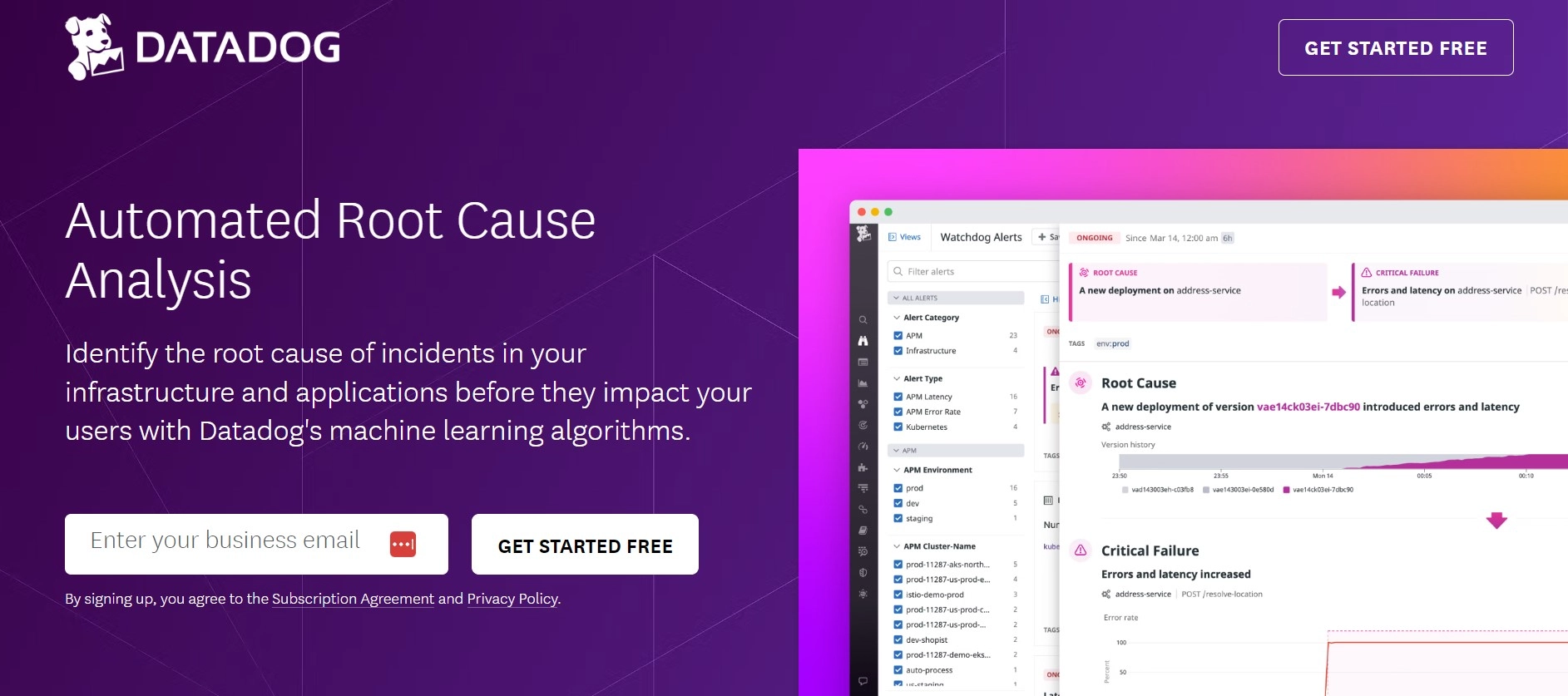
- Features
- Automatic deployment tracking: Tracks and compares metrics for new deployments
- AIOps: Automatically investigates the root cause of critical failures and provides additional context
- Data dashboard: Shows visual representation of key metrics and makes it easier to pinpoint root causes
- Watchdog: Analyzes your software environment constantly and gives alerts based on custom criteria
- Strengths
- Reliable customer service and helpful support
- Easy to set up and integrate with your software environment
- Powerful event tracking and monitoring features
- Weaknesses
- Plugins are lacking in functionality
- User interface is complex and challenging to learn
- Expensive pricing model
- Pricing
- Offers a free trial and a free version. Paid plans start at $15 per month per user.
Causelink by Sologic: Best for creating charts
Causelink is an app for creating charts and diagrams in the root cause analysis process. It builds powerful graphics that help you identify the root cause of any problem quickly and easily.
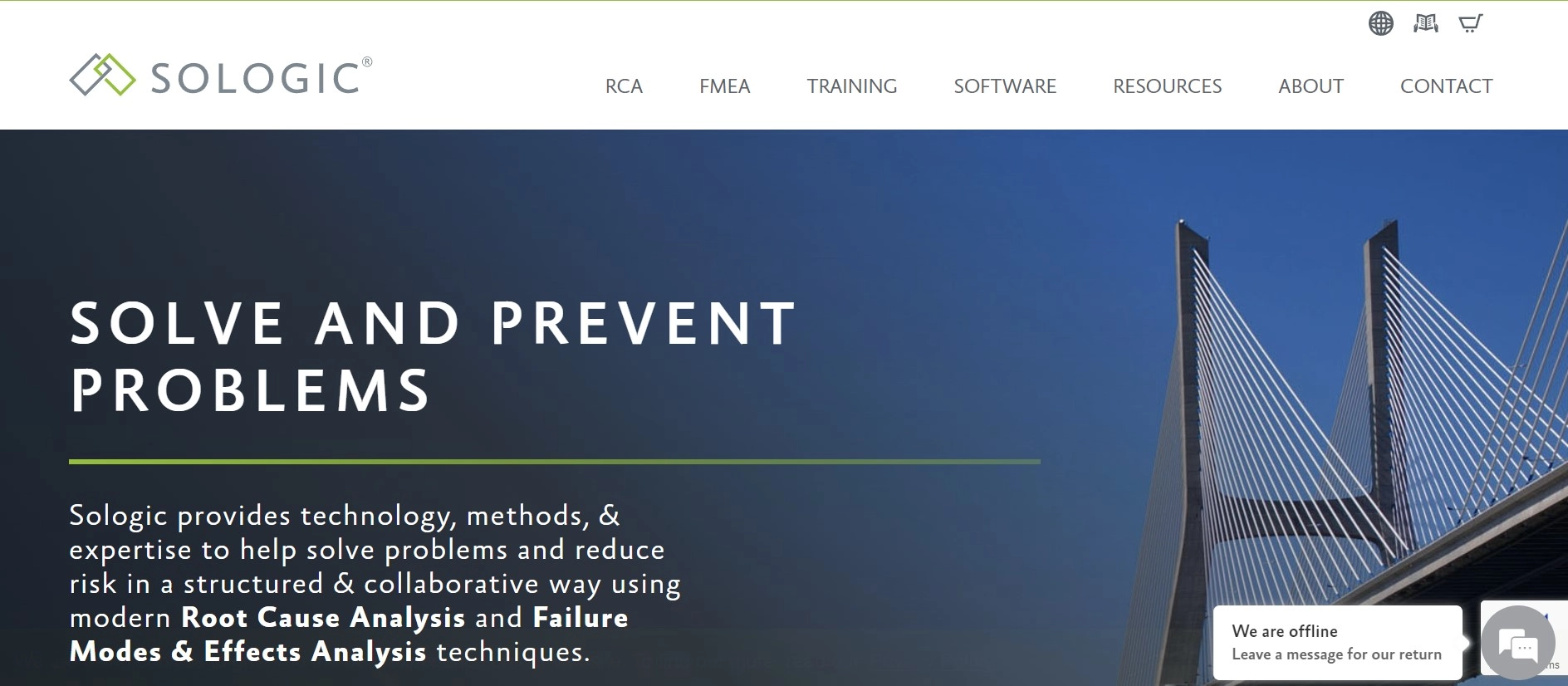
- Features
- RCA templates: Replace physical RCA methods directly with software tools
- Cause and effect diagrams: Create diagrams using the most popular RCA techniques
- Incident timeline: Track problems as they happen to discover the root cause
- Data export: Export your results directly to popular file types
- Strengths
- Natively supports a few of the best methods of root cause analysis
- Easy to learn and use initially
- Simple and straightforward user interface
- Weaknesses
- High price for what it offers
- Lacks automatic data analysis features
- RCA process is still manually performed with this software
- Pricing
- Free trial available. Individual plan starts at $384 per year, and Team plan starts at $6,250 per year.
SafetyCulture: Best for safety and maintenance
SafetyCulture is a cloud-based root cause analysis software that enables companies to collect real-time data and use it to improve their processes. It uses data analytics to help management identify problems and consider possible solutions.
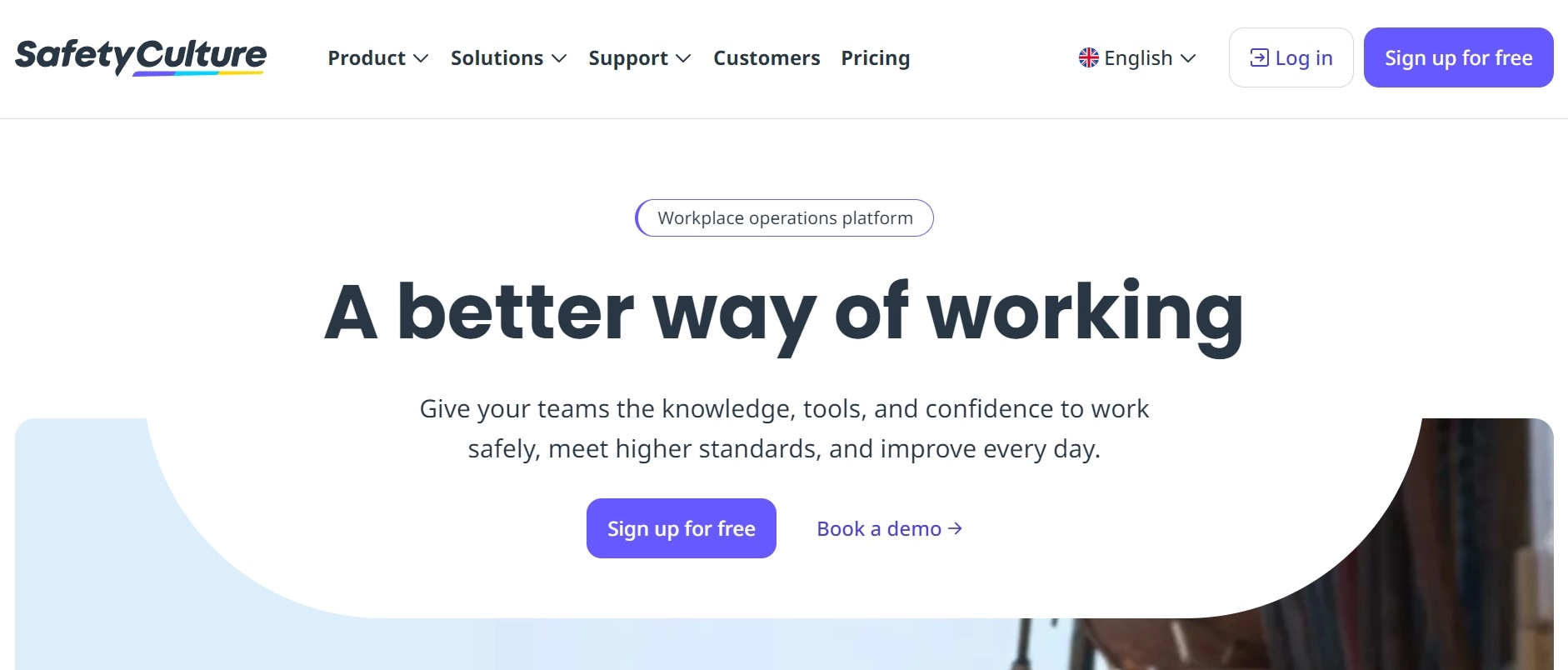
- Features
- Android and iOS apps: Take your data with you on your mobile device
- Capture data: Track performance data to find problems in real-time
- Task management: Assign root cause analysis tasks to your team
- Issue reporting: Your team can report problems as they happen
- Strengths
- Powerful data analytics and reporting features
- Easy to create and customize audits and inspection checklists
- Powerful all-in-one software for maintenance inspections and safety audits
- Weaknesses
- Steep learning curve to use initially
- Customer service and support is lacking
- Difficult to use advanced features
- Pricing
- Offers a free trial and a free version. Paid plans start at $19 per user per month.
Intelex: Best for environment, health, safety, and quality systems (EHSQ)
Intelex is designed to streamline the RCA process by tracking incident data and storing analysis all in one place. With the data, the cloud-based software makes applying various RCA methodologies easy and determines the root cause.
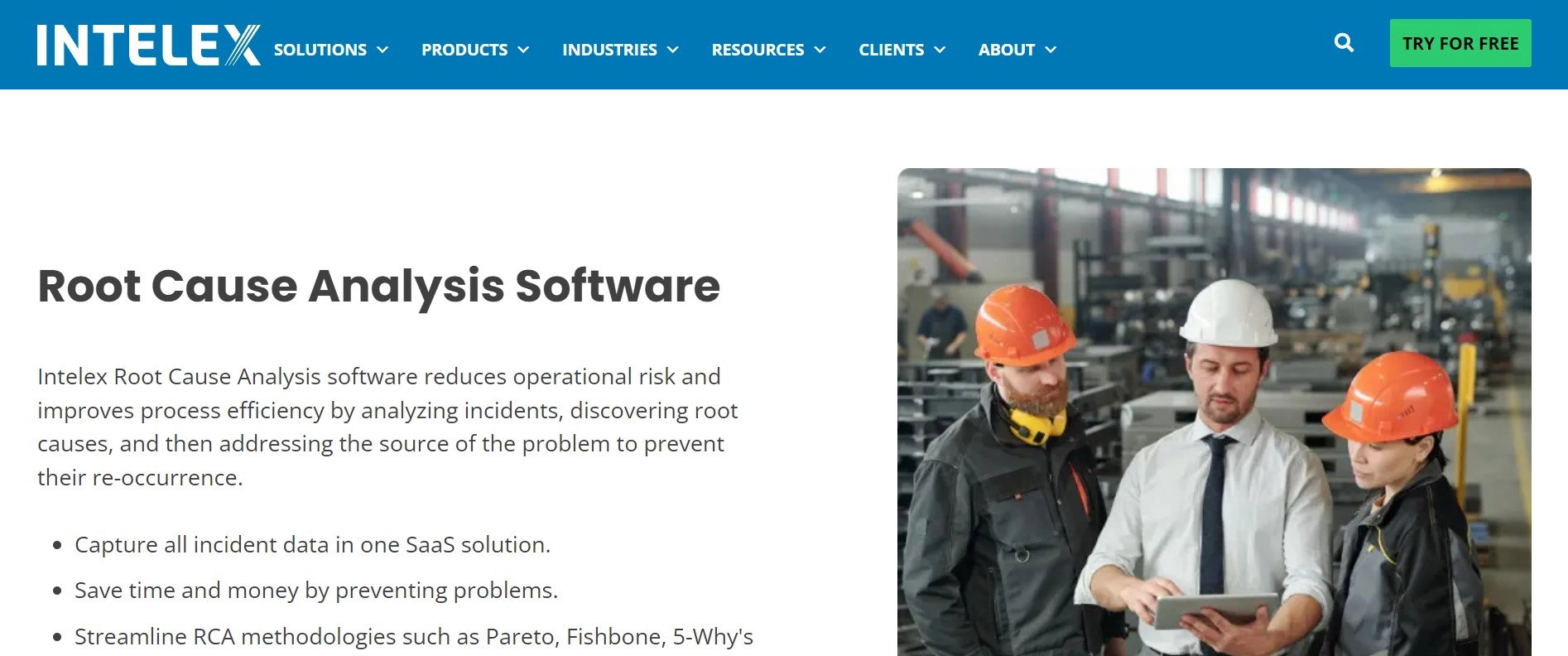
- Features
- Data management: Tracks and collects all incident and cause analysis data in one place
- Tailored RCA methodologies: Supports a few different methodologies for root cause analysis
- Customizable dashboards: Easily create dashboards and share reports
- Integrated workflow: Collect data from processes outside your organization
- Strengths
- Customized for EHSQ-focused reporting
- Simple and straightforward user interface
- Easy to customize dashboards and reports
- Weaknesses
- Customer service is sometimes lacking
- Expensive consulting-on-demand support model
- Software sometimes runs slowly
- Pricing
- Offers a free trial. Contact them for pricing details.
EHS Insight - Best for mobile devices
EHS Insight is a powerful application that uses your data to create attractive dashboards. The dashboards make it easier to spot root causes, especially for non-specialists. It simplifies data collection by offering a mobile app that your employees can use to track processes.
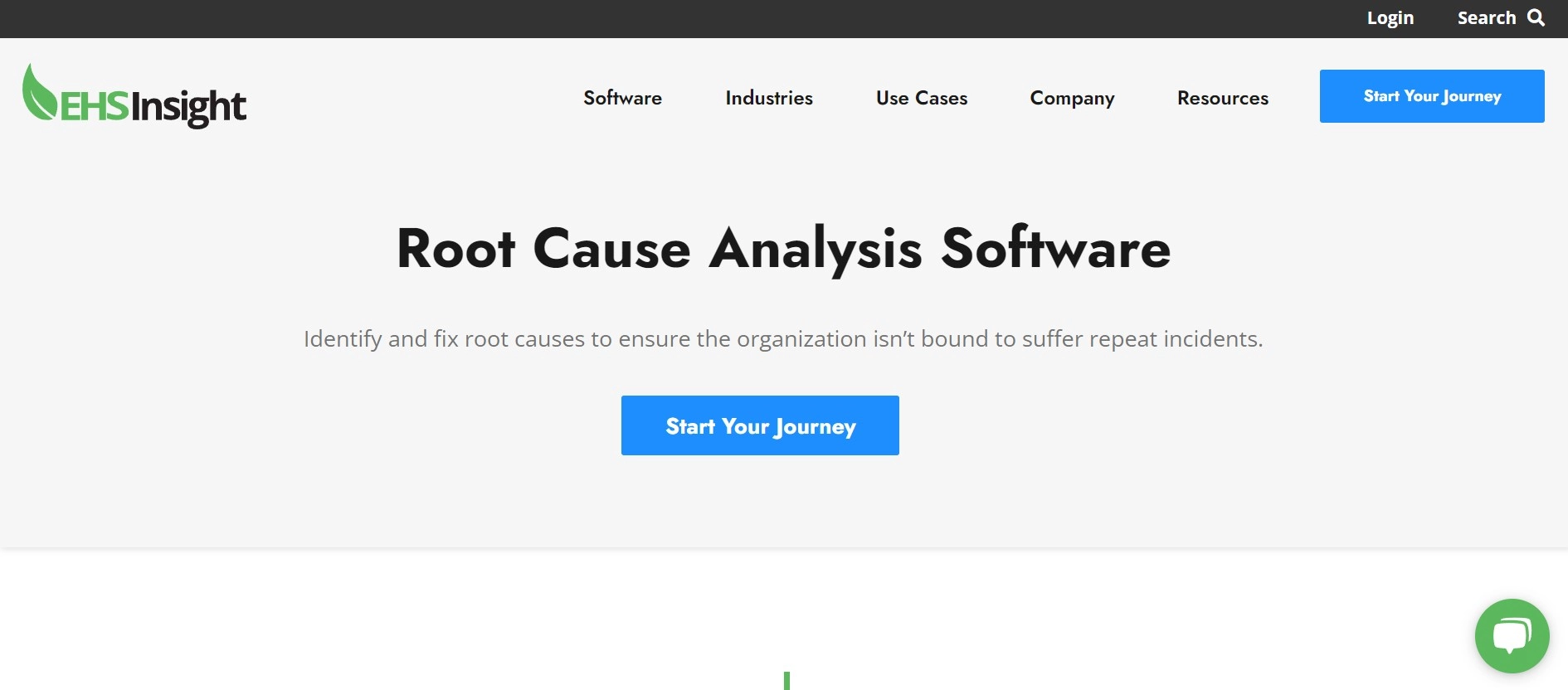
- Features
- Integrated EHS Platform: Covers a variety of functions needed for environmental health and safety
- Mobile version: Collect data and complete tasks wherever you are
- Create reports: Easily create incident reports for OSHA requirements
- Collect incident data: Track problems and issues for analysis
- Strengths
- Comprehensive EHS tools
- Easy to configure and implement in the field
- Offers full software usage from a mobile device
- Weaknesses
- Data entered can’t be edited later
- Lacks phone support for customer service
- Lacks customizability in its functionality
- Pricing
- Offers free trial. Contact them for pricing details.
How Motion can help you analyze problems and find solutions
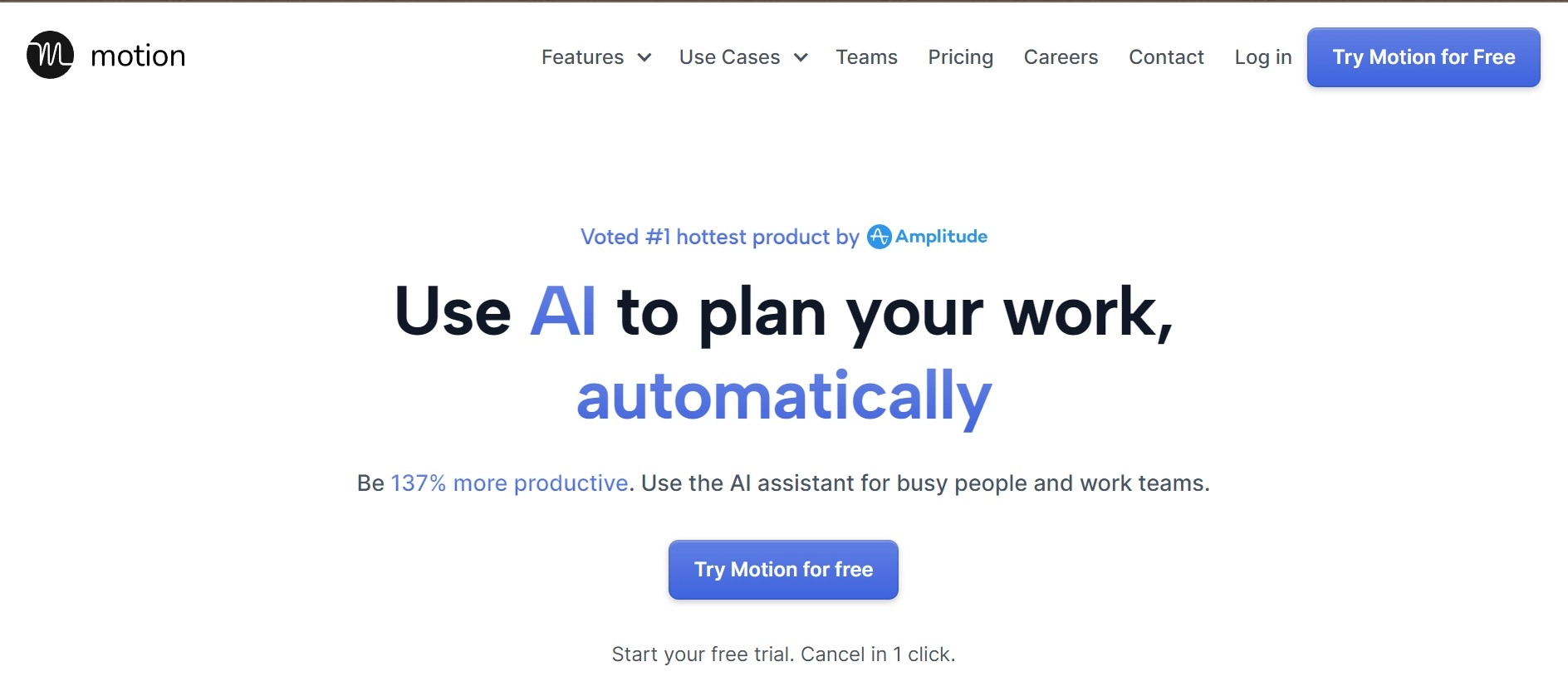
Motion is an AI-enabled personal assistant that can guide you through root cause analysis. It automatically organizes, prioritizes, and schedules tasks for your entire team, enabling your team to perform the root cause analysis process productively and effectively.
Here’s what Motion can do for you:
- Task Management: Organize and prioritize tasks for your root cause analysis process. Let AI create your schedule so you can focus on solving problems.
- Calendar: When creating your optimal schedule, motion considers your tasks, priorities, and meetings.
- Project Management: Motion can guide your team's entire project of root cause analysis. Keep all aspects of the project in mind with the project manager in Motion.
- Meeting Scheduler: This tool makes scheduling meetings with the employees involved in the root cause analysis process easy. Communication is key to problem-solving.
Here’s how Motion helps with the root cause analysis process:
- Less uncertainty: You’ll always know the next step in your RCA process and won’t waste time wondering what to do.
- Save time: Let Motion create your schedule so you don’t have to do it manually.
- Minimize stress: Organizing your project, tasks, and calendar will make the RCA process stress-free for your team.
- Get more work done: A clear plan for your tasks ensures you complete your project as efficiently as possible
- Improve task organization: Using Motion, you can view your tasks in a list or organize them into Kanban boards. That makes it easy to see the big picture and filter your tasks based on your priorities.
Motion can be used effectively with any other software tool in this article. It can plan, organize, and prioritize root cause analysis tasks alongside more specialized solutions.
Let Motion guide your root cause analysis process
Now you know why RCA is important and what it can do for your business. Using the right software makes the RCA process faster and more efficient.
Start your RCA implementation using Motion. It automatically prioritizes and schedules the tasks of performing your root cause analysis. Motion pairs well with any of the software solutions listed above.
You can try Motion for free and use it with your root cause analysis process today. Sign up for a 7-day free trial here.

Pat is a Digital Project Manager for Morrow Media by day and a Freelance Vigilante Word Wizard by Night.





